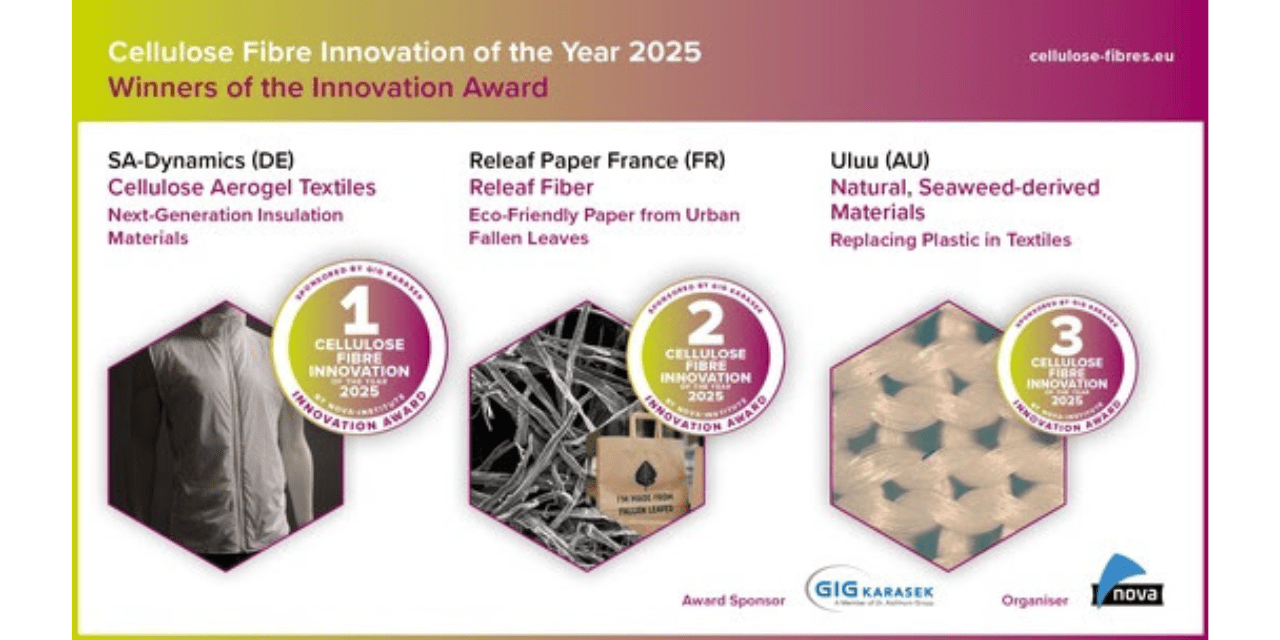The Cellulose Fibres Conference 2025 (CFC 2025), held on March 12-13 in Cologne, Germany, successfully brought together industry leaders, innovators, and researchers to explore the latest advancements in fibre technologies across textiles, hygiene products, and packaging. As a premier international platform for the emerging cellulose fibre industry, the two-day hybrid event attracted approximately 200 participants from 22 countries, underscoring the growing global focus on sustainable textile solutions.
Breakthrough Developments in Cellulose Fibres
The conference emphasized the increasing importance of environmental responsibility in the textile industry. Discussions revolved around the primary sources for cellulose fibre production, including wood-based chemical pulp and emerging alternatives such as agricultural waste, recycled textiles, and paper-grade pulp. These developments reflect a global shift towards innovative processing techniques that enhance sustainability.
For the first time, biosynthetics featured prominently at CFC 2025, capturing industry-wide attention. Experts highlighted the challenges and opportunities associated with biosynthetics, focusing on scalability, biodegradability, and performance comparisons to conventional fossil-based synthetic fibres.
Scientific Discourse and Industry Insights
CFC 2025 fostered dynamic discussions on key topics, including circular economy strategies, fibre-to-fibre recycling, marine biodegradability versus microplastic formation, alternative feedstocks, and cutting-edge technologies in fibre production.
Rahul Bansal, Vice President & Head of Global Nonwoven Business at Birla Cellulose (IN), remarked, “The Cellulose Fibres Conference provides a dedicated platform for knowledge-sharing and business connections across the entire cellulosic fibre value chain. With the global shift towards plastic-free products, cellulose-based fibres are attracting increased investment in innovation and process development.”
Industry experts reported significant investments in cellulose fibre production, with global annual capacity expansion reaching approximately 200,000 tonnes. Lyocell production is driving this growth, with an anticipated 17% annual increase from 2024 to 2029, as confirmed by Marina Crnoja-Cosic of Textile ETP (BE). Andreas Engelhardt from The Fiber Year (CH) further highlighted that Lyocell is gradually replacing viscose and cotton, given the stagnation in cotton production due to climate change.
To support the industry’s evolution, Dieter Eichinger of CIRFS (BE) proposed a new standard encompassing all cellulosic fibres—Viscose, Lyocell, Tencel, Modal, Cupra, and emerging fibre innovations—under the generic term “cellulose fibres.” This proposal received widespread industry support, with IKEA (SE) expressing a strong interest in increasing cellulose fibre usage in their products.
Recognizing Innovation: The Cellulose Fibre Innovation of the Year 2025
One of the event’s highlights was the announcement of the “Cellulose Fibre Innovation of the Year 2025” award, sponsored by GIG Karasek. The award recognizes groundbreaking advancements that drive the future of sustainable fibres. This year, the awards extended to include biosynthetics, with the top three innovations being:
- SA-Dynamics (Germany): Cellulose Aerogel Textiles
SA-Dynamics introduced 100% biodegradable cellulose aerogel textiles, combining the flexibility of fabrics with superior thermal insulation properties, offering sustainable alternatives for both textiles and construction. Visit Website - Releaf Paper France (France): Releaf Fiber
Transforming fallen urban leaves into cellulose fibres, Releaf Paper France provides an eco-friendly alternative to traditional hardwood pulp, aligning with circular economy principles. Visit Website - Uluu (Australia): Seaweed-Derived Biosynthetic Materials
Uluu is pioneering seaweed-derived PHA polymers to replace plastic-based textiles, ensuring biodegradability in various environments and eliminating microplastic pollution. Visit Website
Networking and Industry Collaboration
The conference also provided ample networking opportunities, with a dedicated matchmaking tool facilitating over 50 business meetings. Attendees engaged in strategic collaborations to drive innovation and market growth in the sustainable fibres sector. One of the social highlights was a traditional German bowling event, fostering informal discussions and strengthening industry connections in a lively atmosphere.
Acknowledging Sponsors
CFC 2025 was made possible through the support of esteemed sponsors, including GIG Karasek, Birla Purocel, List Technology AG, Valmet, and DIENES. Their contributions played a vital role in promoting innovation and sustainability in cellulose fibre production.
DDI Wolfgang Aichhorn, MBA, Head of Sales & Marketing at GIG Karasek, noted, “Every year, we are impressed by the outstanding innovations at the Cellulose Fibres Conference, showcasing the immense potential of sustainable fibres.”
Looking Ahead
With the success of CFC 2025, momentum continues to build toward sustainable, bio-based textile solutions. The conference has reinforced the industry’s commitment to shaping a greener future, ensuring that cellulose fibres play a pivotal role in the evolving landscape of sustainable textiles.
For more updates on sustainable fibres and upcoming industry events, stay connected with #CFC2025.

